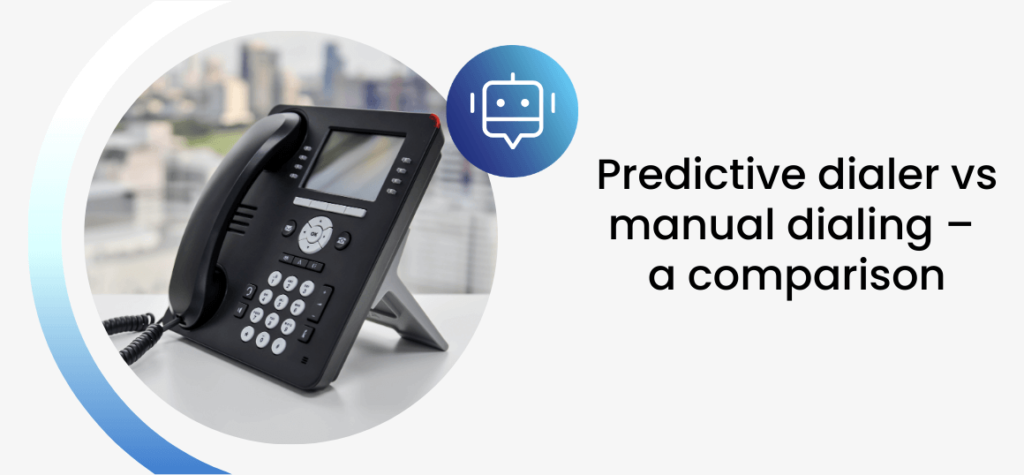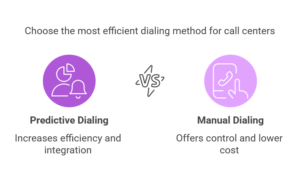Predictive dialer vs manual dialing – a comparison

Predictive dialer vs manual number dialing – how to boost telemarketing effectiveness?
In telemarketing and phone sales, improving efficiency in customer service is key. That’s why contact center managers are constantly looking for solutions to increase the number of calls made. A great example of such a tool is the predictive dialer. But how does it compare to manual number dialing? Let’s take a look at the differences.
What is a predictive dialer?
In simple terms, a predictive dialer is a system that automatically dials phone numbers. The system works by automatically calling the next customer as soon as the agent finishes their previous call. This allows the agent’s working time to be used more effectively. In a single day, they can complete a significantly higher number of phone calls, which directly boosts the success rate of the campaign.
At the same time, downtime and idle moments are minimized, as the number of calls is adjusted to match the agent’s capacity. It’s a modern approach to running call center operations—one that significantly enhances productivity.
The advantage of predictive dialer solutions over manual dialing in call centers
How does a predictive dialer system compare to manual number dialing? Naturally, an automated tool significantly increases daily work efficiency. A call center specialist can handle a much larger number of leads within the same timeframe. This solution is used in both B2C and B2B communication. Manual dialing is less efficient than predictive dialing due to increased agent downtime.
At the same time, predictive dialer software can be integrated with CRM systems and other tools used by the company, making it easier to maintain high-quality phone calls and oversight. A higher number of agent calls boosts overall campaign effectiveness—such as by increasing sales conversions.
Manual dialing is less efficient but offers more control over who the agent contacts. In predictive dialing, the system determines the next contact, whereas with manual dialing, it’s the consultant who decides. This is useful for scheduled calls and follow-ups. Additionally, manual dialing is cheaper. On the other hand, the cost of implementing an automated system pays off relatively quickly through higher conversion rates and improved productivity. From a business perspective, predictive dialers clearly come out on top. It’s no surprise that forward-thinking companies are choosing to implement them.

Discover the EasyCall system
This type of solution is available in our EasyCC system. We encourage you to explore its features and capabilities. Get in touch with one of our experts, who will walk you through the benefits of using EasyCC in your business and help you implement our tool for managing call center operations. It’s a recommended software solution for 2025.
